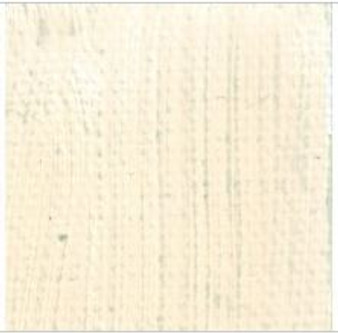Product Description
Orange Molybdate is a brilliant orange pigment made by coprecipitation of lead chromate and lead molybdate often in the presence of lead sulfate and used in plastics, protective coatings and printing inks. Molybdate orange has been widely used in coatings and plastics for many decades during the 20th century because of its bright color and high hiding power. Its use in coatings and plastics today is currently restricted in several countries due to the lead and chromium VI content in its composition. Orange molybdate had a brief history of use by artists for several decades in the last century.
This is the first time it is being reintroduced as an artists' oil color and is now available exclusively from Natural Pigments.
Orange Molybdate is opaque, strongly tinting orange. Its hue is reddish orange, deeper red than minium (red lead) and has a pleasing slightly ropey consistency in oil.
Molybdate orange has been classified as Pigment Red 104 and number 77605 (Molybdate Orange/Red) in the Colour Index, a directory of pigments and dyes published by the UK Society of Dyers and Colourists and the American Association of Textile Chemists and Colorists.
Orange molybdate has not been rated for lightfastness by the ASTM, but independent studies have shown that it remains unchanged in oil under normal atmosphere and can be used with all other pigments without alteration.
HISTORY
Mixed crystal pigments of lead chromate and lead molybdate were first described by E. Lederle in a German patent (no. 22F.1.52.30) applied for by the I.G. Farbenindustrie A. G. on August 30, 1930 (see also German patent 574,379, April 12, 1933, and 574,380, April 13 1933; also U.S. patent 1,926,447, September 12, 1933). Although molybdenum orange went into production soon after 1935 for use in printing inks and paints, it is not known that it was used in artists paints until later. According to Susan Lake, it was used by Willem de Kooning and found in combination with other pigments in his 1965 painting Woman.
PERMANENCE AND COMPATIBILITY
The fastness properties of orange molybdate and red molybdate pigments are comparable with those of the chrome yellows. As with the chrome yellows, the pigment particles can be coated with metal oxides, metal phosphates, silicates, etc., to give stabilized pigments with high color brilliance and good fastness properties, as well as highly stabilized grades with very good resistance to light, weathering, sulfur dioxide, and temperature and with a very low content of acid-soluble lead. (Read more at the pigment Orange Molybdate)
Rublev Colours Orange Molybdate is made using a silicate-coated (encapsulated) grade with very good lightfastness.
Combinations with organic red and yellow pigments give a considerable extended color range. Such combinations have very good stability properties because the lightfastness and weather resistance of many organic red pigments are not adversely affected by molybdate pigments. For example, Colour Index Pigment Red 3 (Toluidine red) is often used in conjunction with molybdate red.







